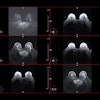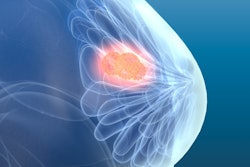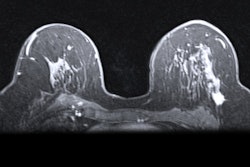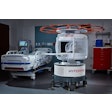
An algorithm developed by researchers in India showed promise in differentiating between benign and malignant breast tumors, according to a study published June 12 in Expert Systems with Applications.
The research team led by Dr. Poonam Jaglan from the Deenbandhu Chhotu Ram University of Science and Technology in Murthal developed a single-structured algorithm that identifies and classifies breast tissues as normal or abnormal.
"The proposed work can be used like initial screening for the radiologists or may be taken as a second opinion in highly critical cases," the study authors said.
MRI has been touted by researchers as one of the safest methods for early detection of breast tumors. But breast MRI can be challenging and time-consuming to analyze on its own since the breast contains fatty and dense fibro-glandular tissues.
Manually ruling out abnormal tissue regions is dependent on the radiologist interpreting images.
"Even well-experienced physicians may sometimes get interobserver variation rates during the image interpretation," the authors wrote. "Therefore, there is a need to investigate a lesion detection method with high sensitivity and low false-positive detections in order to achieve a fully automated computer-aided design (CAD) system."
The team tested its algorithm by having it examine a breast MRI dataset of 448 images (318 abnormal, 130 normal). Several steps were taken by the algorithm in identifying and classifying breast tissues. They included the following:
- A filtering technique was used for denoising.
- Breast boundary region extraction was performed by selecting nipple and midsternum points to make image rotation invariant.
- Tumor region intensity was determined.
- Normal and abnormal breast tissues were classified.
- Exact location and area of abnormal tissues were evaluated.
The researchers touted the algorithm's results in terms of accuracy, sensitivity, and specificity. They also added that the algorithm's high Jaccard Index coefficient indicates "promising overlap" between the predicted tumor and the manually done image by the radiologist.
| Results of AI algorithm in identifying, classifying tissue on breast MRI scans | |
| Accuracy | 0.937 |
| Sensitivity | 0.956 |
| Specificity | 0.872 |
| Jaccard Index coefficient | 0.921 |
The team said the best way to validate the study's results is to demonstrate different evaluation metrics when compared with manually segmented results by the radiologist.
"This requires the active involvement of many radiologists to establish a large and even standardized medical imaging database," the authors wrote. "The research community also needs to share the benchmark datasets to facilitate this revolution."
However, they added that the study's results give "a basic foundation" for optimization by selecting the features more precisely.
"The experimental analysis performed on the different cases shows that the given algorithm is accurate enough when compared with the manual segmentation done by radiologists," the researchers said.



.fFmgij6Hin.png?auto=compress%2Cformat&fit=crop&h=100&q=70&w=100)




.fFmgij6Hin.png?auto=compress%2Cformat&fit=crop&h=167&q=70&w=250)











